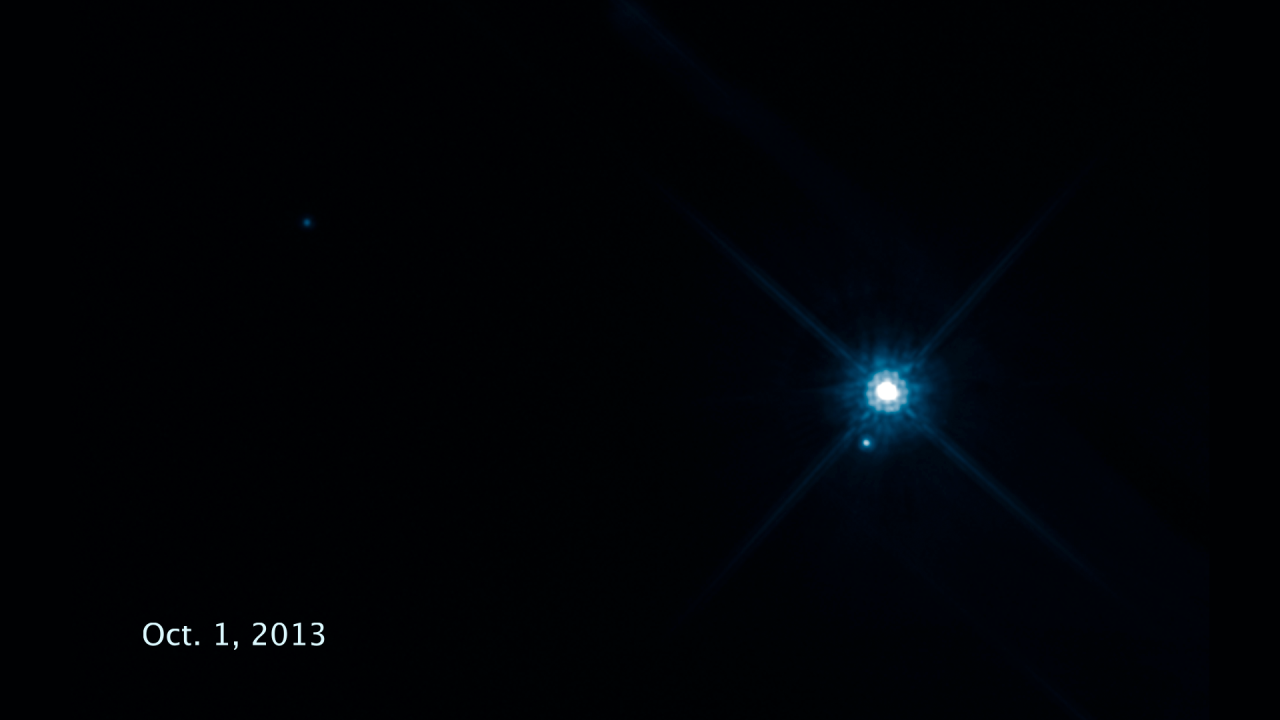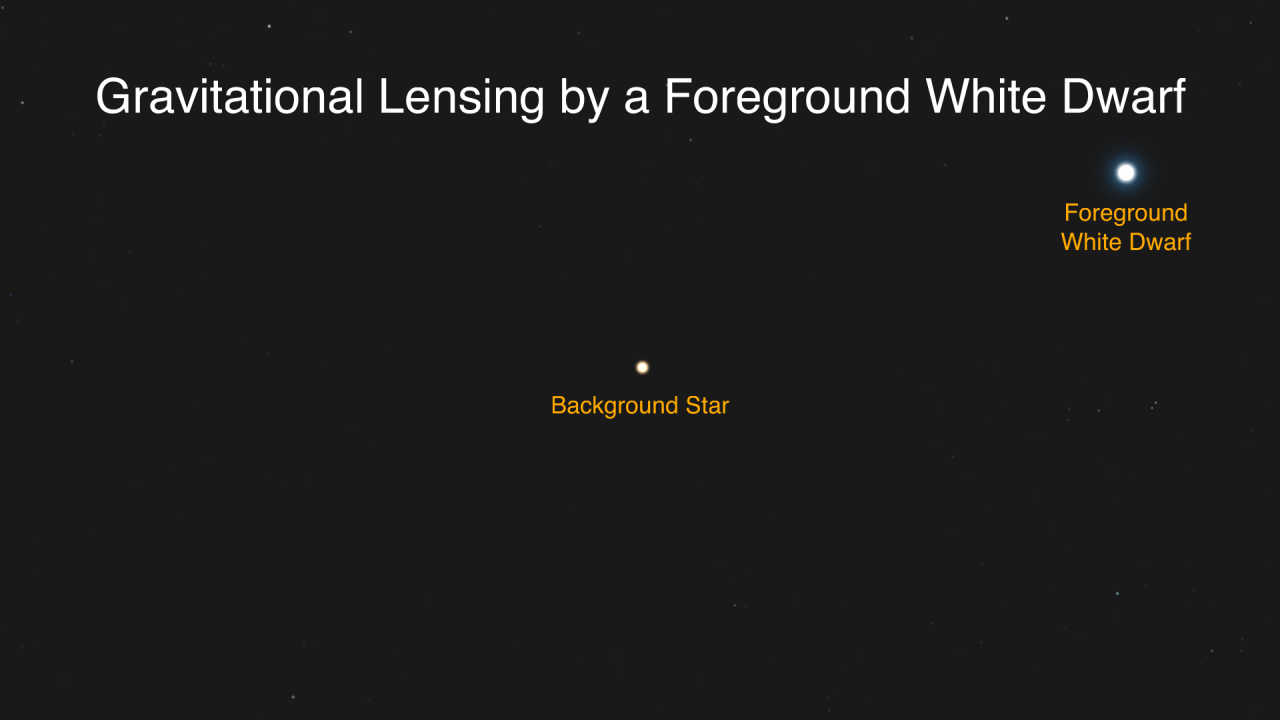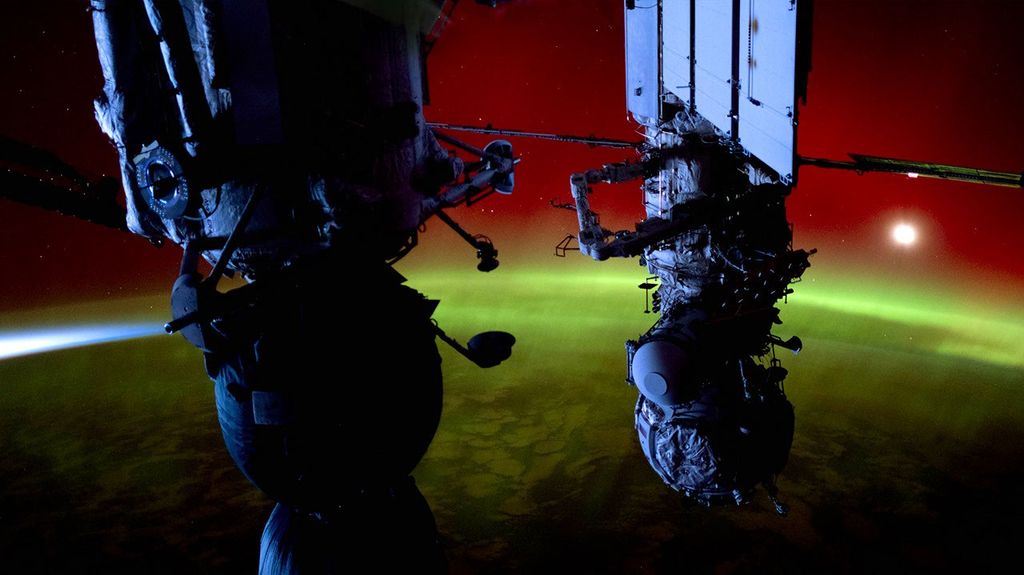1 min read
White Dwarf Star Stein 2051 B

Stellar Alignment Yields White Dwarf's Mass
Looks can be deceiving. In this Hubble Space Telescope image, the white dwarf star Stein 2051 B and the smaller star below it appear to be close neighbors. The stars, however, reside far away from each other. Stein 2051 B is 17 light-years from Earth; the other star is about 5,000 light-years away.
Astronomers made the Hubble observations of the white dwarf, the burned-out core of a normal star, and the faint background star over a two-year period. Hubble observed the dead star passing in front of the background star, deflecting its light. During the close alignment, the distant starlight appeared offset by about 2 milliarcseconds from its actual position. This deviation is so small that it is equivalent to observing an ant crawl across the surface of a quarter from 1,500 miles away. From this measurement, astronomers calculated that the white dwarf's mass is roughly 68 percent of the sun's mass.
Stein 2051 B is named for its discoverer, Dutch Roman Catholic priest and astronomer Johan Stein.
About the Object
- R.A. PositionR.A. PositionRight ascension – analogous to longitude – is one component of an object's position.04h 31m 13s
- Dec. PositionDec. PositionDeclination – analogous to latitude – is one component of an object's position.+58° 58' 41"
- ConstellationConstellationOne of 88 recognized regions of the celestial sphere in which the object appears.Camelopardalis
- DistanceDistanceThe physical distance from Earth to the astronomical object. Distances within our solar system are usually measured in Astronomical Units (AU). Distances between stars are usually measured in light-years. Interstellar distances can also be measured in parsecs.17 light-years, 5.5 parsecs
About the Data
- Data DescriptionData DescriptionProposal: A description of the observations, their scientific justification, and the links to the data available in the science archive.
Science Team: The astronomers who planned the observations and analyzed the data. "PI" refers to the Principal Investigator. - InstrumentInstrumentThe science instrument used to produce the data.HST>WFC3/UVIS
- Exposure DatesExposure DatesThe date(s) that the telescope made its observations and the total exposure time.Oct. 2013 - Oct. 2015
- FiltersFiltersThe camera filters that were used in the science observations.F606W (wide V), F814W (I)
- Object NameObject NameA name or catalog number that astronomers use to identify an astronomical object.Stein 2051 B, WD 0426+588
- Object DescriptionObject DescriptionThe type of astronomical object.White dwarf star
- Release DateJune 7, 2017
- Science ReleaseHubble Astronomers Develop a New Use for a Century-Old Relativity Experiment to Measure a White Dwarf’s Mass
- Credit

This image is a composite of separate exposures acquired by the WFC3/UVIS instrument on the Hubble Space Telescope. Two filters were used to sample different wavelength ranges. The color results from assigning different hues (colors) to each monochromatic (grayscale) image associated with an individual filter. In this case, the assigned colors are: cyan F606W and orange F814W.

Related Images & Videos

Hubble Measures Deflection of Starlight by a Foreground Object
How Gravity Can Bend Starlight This illustration reveals how the gravity of a white dwarf star warps space and bends the light of a distant star behind it. White dwarfs are the burned-out remnants of normal stars. The Hubble Space Telescope captured images of the dead star,...

Compass and Scale Image for Binary Star System Stein 2051
This Hubble Space Telescope image shows the binary star system Stein 2051 on October 1, 2013, consisting of the brighter, redder "A" component at lower right and the fainter, bluer "B" component near the center, a white dwarf star. Because these stars are relatively close to...

White Dwarf’s Motion Through Space
This time-lapse movie, made from eight Hubble Space Telescope images, shows the apparent motion of the white dwarf star Stein 2051 B as it passes in front of a distant star. The observations were taken between Oct. 1, 2013, and Oct. 14, 2015. White dwarfs are the burned-out...

White Dwarf’s Gravity Bends Light from Background Star
This animation shows the motion of a white dwarf star passing in front of a distant background star. During the passage, the faraway star appears to change its position slightly, because its light path has been altered by the white dwarf's gravity. When the white dwarf Stein...
Share
Details
Claire Andreoli
NASA’s Goddard Space Flight Center
Greenbelt, Maryland
claire.andreoli@nasa.gov

























